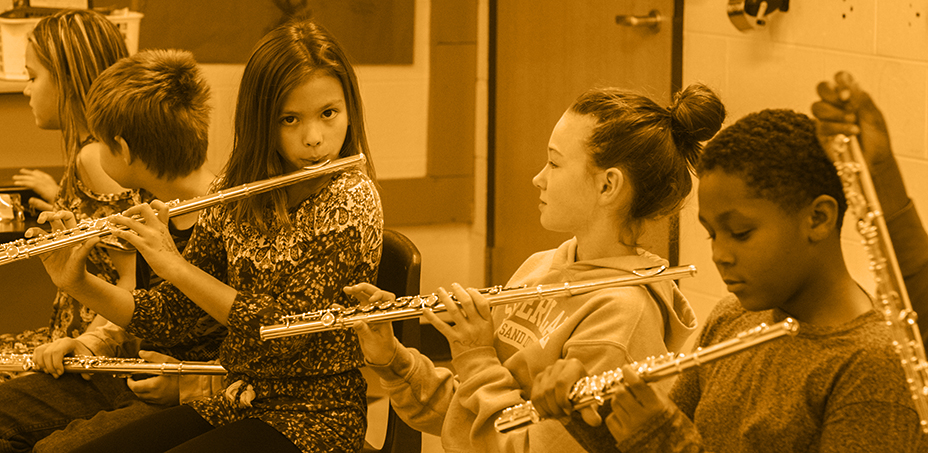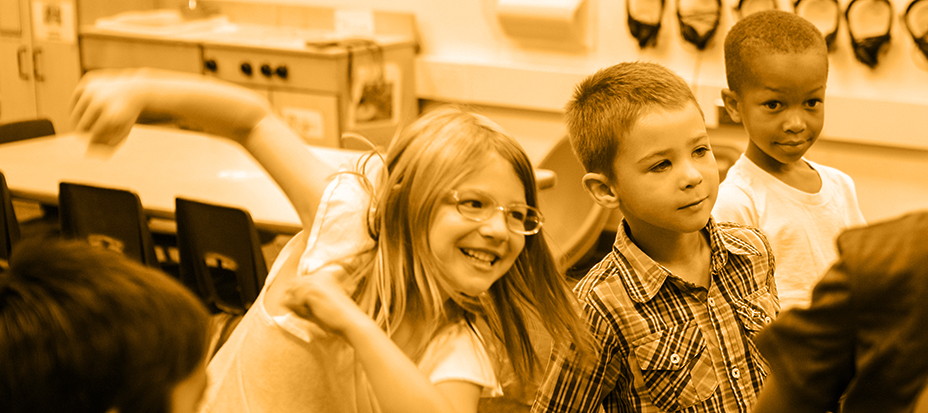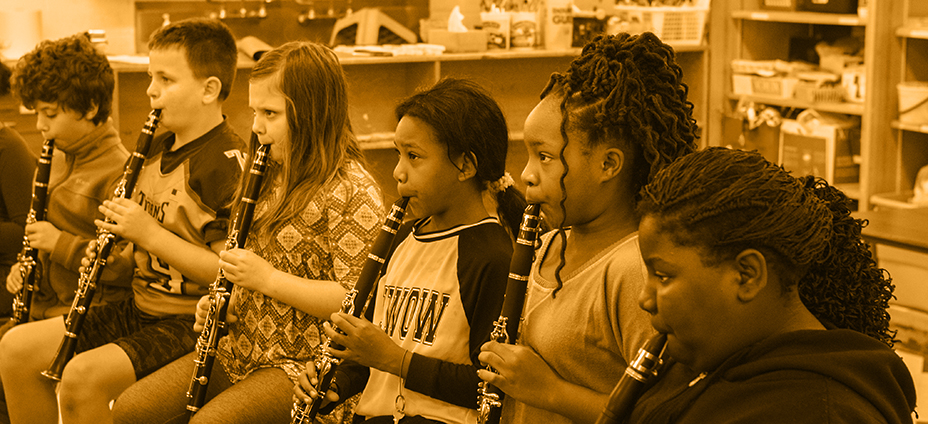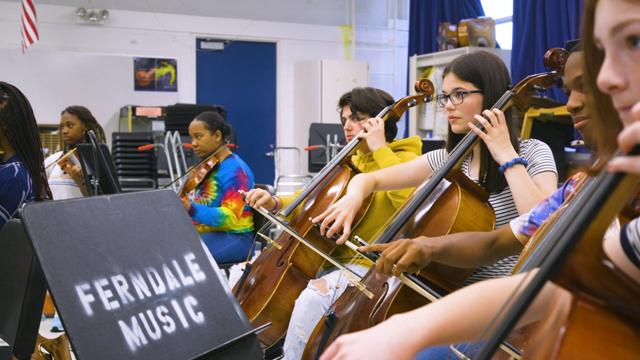Music Education
A Brain-Based Advantage
In our elementary classrooms, music and movement are embedded into the daily routine. Music and movement are essential to child development and activate a child's frontal lobes, which is important in language development. In addition, music and movement produce a neuro-chemical called endorphins. Endorphins are feel-good chemicals that cause a feeling of energy and make the brain more conducive to learning.

Crossing the Midline
Another important aspect of music and movement in our youngest learners is crossing the midline. The 'midline' is an invisible line from the top of your head to the tip of your toes. Cross lateral movement is necessary for the brain to be ready to learn. Cross lateral or crossing the midline is easily done while dancing, moving, tapping patterns, etc. Cross lateral movement enables the brain to cross the mid-line - going from the right side of your body across the center to the other side. This simple activity is necessary for reading and writing. When reading and writing, the eyes and hand must go from one side of the paper to the other.
Other effects of music and movement:
great for the cardiovascular system
supports the balance system.
Did you know a child who isn't able to stand on one foot probably isn't able to read and write? Movement, coordination, and balancing activities are all ways to strengthen the vestibular system in our brain.

The Sound of Music
Ferndale prides itself on supporting the whole child. Our focus on and understanding of the importance music and movement play in the role of a child's brain is visible in our daily practices. In our elementary buildings, students do attend a vocal music class twice a week. In addition, our teachers build in 'brain breaks' for students each day so they can have some organized, systematic movement to activate their brains.

Intro to Instrumentation
Band and Orchestra starts in 5th grade at FUEL, and meets daily for 40 minutes. While optional, in most years 70-80% of students elect to play a band and orchestra instrument. We are able to break the classes down into like instruments, and the daily instruction allows students to build very solid fundamentals from the very first year. This is crucial to the long-term success of both the students and the program of which they are a part, as it is very easy to build bad habits without that regular instruction, and simultaneously very easy to build strong habits with that regular daily instruction.
Ideally, students learn all the fundamental skills they will ever need as a musician that very first year, and then spend the rest of their time just refining and expanding those skills and knowledge, much like an early and solid start at reading gets students ahead and keeps them ahead! We are seeing significant growth in quality and number of students in the program thanks in part to this approach.

